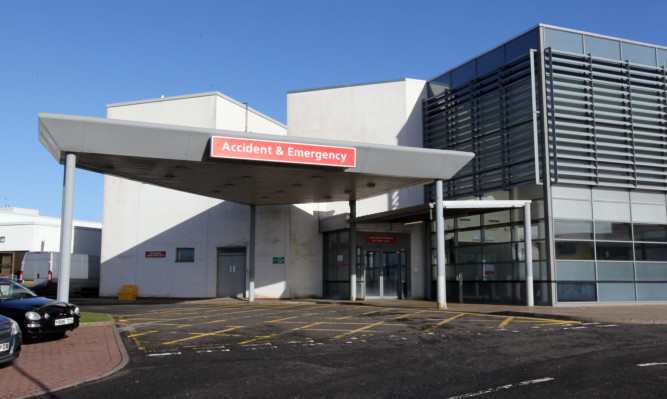One in 10 patients in accident and emergency units were not treated within the target time in January, new figures reveal.
Across Scotland, 89.7% of patients were either admitted or transferred for treatment, or discharged from hospital, within four hours of arriving at A&E in the first month of the year, official statistics show.
In the same month in NHS Lanarkshire, 83.5% of patients in accident and emergency were dealt with within four hours. Health Secretary Alex Neil conceded that “pressure on our A&E departments is a pressing issue”.
The “busy winter” and the demands of an ageing population meant an increase in admissions to A&E, he said.
But the figures show an improvement in February and March, with an average 91.9% of A&E patients across Scotland dealt with inside the target time for both months.
There has also been a big drop in the number of A&E patients waiting 12 hours or more, falling from 323 in December to 92 in March.
The figures were released as the Scottish Government announced that a task force will oversee a £50 million action plan aimed at improving emergency care in hospitals.
National standards set out that A&E patients should be either admitted or transferred for treatment, or discharged from hospital, within four hours.
The Scottish Government wants 95% of people attending A&E departments dealt with within four hours by September next year, as a step towards meeting the higher target of 98%.
In NHS Shetland, 99.5% of A&E patients in March were dealt with within four hours but in NHS Forth Valley this was achieved for 87.6% of people.
Labour health spokeswoman Jackie Baillie said: “For almost four years now targets have been missed in A&E departments across Scotland. The SNP’s only solution so far has been to downgrade targets, but even their revised numbers would not be achieved based on these latest figures.
“This is no way to run a health service. If targets are not achieved, they cannot simply be revised. Action must be undertaken to tackle the problem. Instead we have cuts to budgets and nursing staff and pressure on our medical professionals.”
Mr Neil announced that Jim Crombie, director of surgery and anaesthesia at NHS Glasgow, will head the task force and take on the job of national programme director for unscheduled care.
The task force will oversee implementation of the action plan. The new body will include GPs, senior figures from health boards and the Scottish Ambulance Service.
Mr Neil said: “We are taking significant action to improve unscheduled care in Scotland to make sure people are seen and treated in our hospitals and as quickly as possible.
“There is no doubt that pressure on our A&E departments is a pressing issue. We have seen a busy winter and as we continue to deal with the demands of an ageing population, we are seeing an increase in admissions adding even more pressure on doctors and nurses who are doing an outstanding job.
“That is why we are investing £50 million in our unscheduled action plan to ensure people are seen quickly and treated effectively when they arrive at hospital in an emergency.
“The new task force that I have brought together to oversee this process involves experts from across Scotland and across the medical profession. I am confident that these are the right people for the job.
“The key lies in looking at the whole healthcare system, and we are already starting to see progress.”
The action plan is said to be aimed at changing the way in which people are seen when they are admitted to hospital to try to ensure they are treated as quickly as possible.
It will also examine how staff work, with the aim of having patients able to leave hospital as soon as they are ready.
The action plan also sets out to improve links with other parts of the healthcare system so support is available for people to be treated in their local community if possible.
